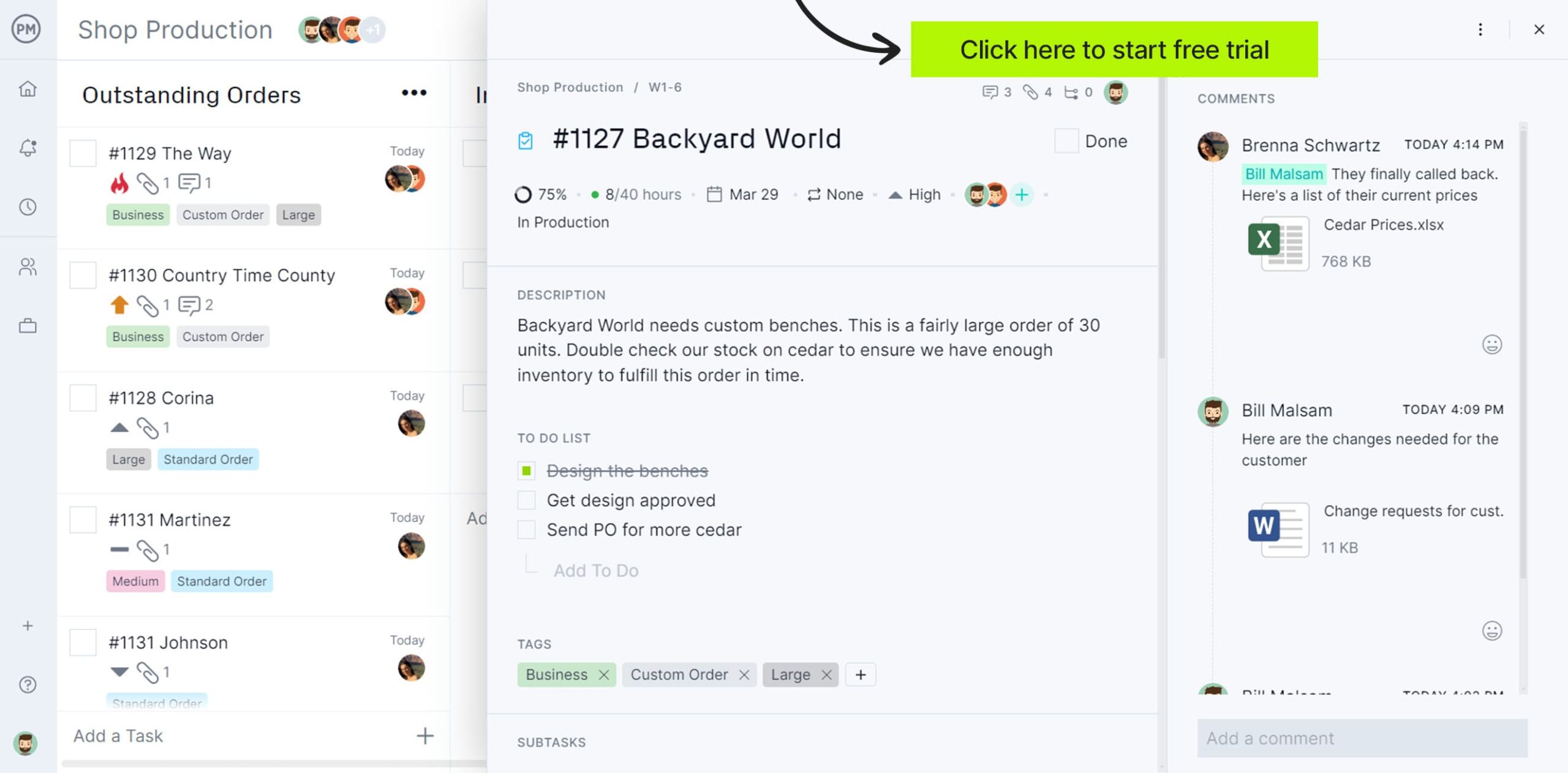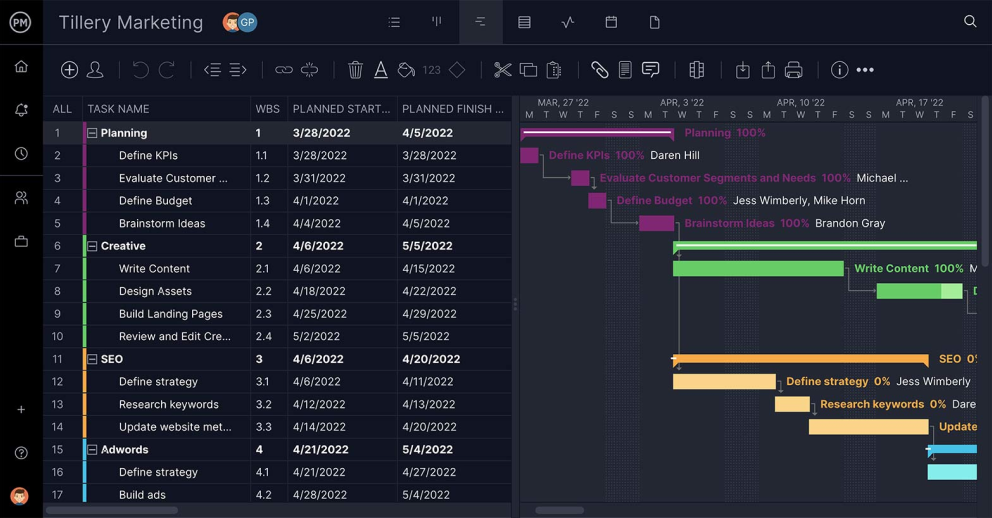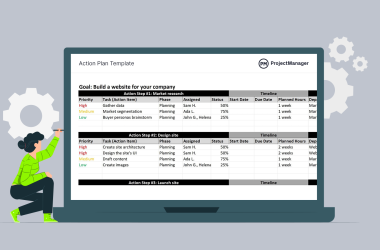Not everyone works the same way, which is why there are different work styles. Some prefer the morning for the heavy lifting, and others that can’t get started until the afternoon. Some work better in groups and others alone. Some live off long-term plans, while others execute in weekly sprints.
As work evolves to include hybrid teams that are located in different places with a wide range of skill sets, successful businesses need to connect everyone to keep them productive.
What Is a Work Style?
Workstyle is simply the way a person thinks, structures, organizes and completes their work. That could be linear, analytic and planned—or more intuitive and flexible.
Most people don’t think about their work style, but when individuals try to collaborate as a group, team or business, then divergent work styles can block progress.
But maybe you don’t have to change the way that you work. It can be hard to change that pattern when it’s so much a part of who you think you are. Perhaps the best solution would be to develop hybrid work processes that allow for a variety of work styles. Of course, you need to set up your team with the right tools that connect different work styles, too.
Software for All Work Styles
ProjectManager is project management software that’s designed for diverse teams. There are multiple ways to work on our tool. For example, someone might want to work with a task list, while someone else on the team may want to use a timeline. No problem. The team can collaborate on projects how they want in five different views: list, board, Gantt, calendar and sheet. Try ProjectManager today for free.

11 Work Style Examples
Your work style is more than just how you prefer to work. Certain personality types influence your work style. You might not even know that about yourself, but who we are has a lot to do with how we work.
The first thing to do to learn how to be productive as a team with different work styles is to define the key types of work styles. Maybe one or several of these working style examples are present in your team.
1. Leader Work Style
The leader is a type that often takes control of the situation whether they have the authority to do so or not. You can’t blame them, it’s in their blood. They’re inspirational, and others are often compelled to follow them. They have a dream or a vision of the right way to work.
Every team needs a leader. But if everyone was a leader, then a team would be pulled in too many directions and get nothing done. A leader excites the team, gets buy-in and motivates everyone to clear the hurdles that get in their way. Unfortunately, they can also be detached and not know how to realize their vision.
2. Doer Work Style
The doer is just that, a person who is all about getting things done. They need tasks to motivate them. They love nothing more than crossing off that line from their to-do list.
Get your free
Task Tracker Template
Use this free Task Tracker Template for Excel to manage your projects better.
When there’s work, you’ll not have anyone more focused and driven on your team. However, they can often just plow through their assignments more to get them done than to get them done correctly. They can also not be communicative. You’ll need to manage them to make sure they’re not just mechanically completing their tasks and failing to communicate with everyone else.
3. Logical Work Style
The logical type is also a doer, but more than just doing they’re also looking at their work analytically. Before they tackle a problem they’ll think it through, but then—watch out!—they’ll jump in with as much enthusiasm as any doer on your team. They tend to love data and rise up to a good challenge.
They are linear thinkers, which is why they’re so focused and accomplished. But they share some of the faults of their fellow doers in that they don’t tend to communicate effectively with others. Ironically, while they can analyze their work, they often are not good planners, which is something to keep a lookout for when managing them.

Detail-Oriented Work Style
The detailed-oriented work style is the learners of the group. They are thoughtful, sequential thinkers, who approach their work strategically. They provide a sense of order and stability to a team, which is an important bonding agent.
These pragmatic workers will tend to avoid risks and work slowly and methodically. They do the research and understand a problem from all sides, which makes them exceptional engineers. While a detail-oriented person might be slow to start, they balance the doers on the team and create a well-rounded group that can take on anything.
5. Supportive Work Style
Until now, we’ve neglected the emotional side of work. Being emotional often has a bad reputation, which it deserves if those emotions are getting in the way. However, the supportive work style is emotional in a supportive fashion. They build relationships, foster collaboration and create harmony among disparate team members.
Teamwork is the point of having a team and a supportive work style is the driver of that collaboration. They are not going to get upset or create strife, but actively work towards understanding and communicating with everyone. They can act as the glue that holds together all the different work styles.
6. Idea-Oriented Work Style
The idea-oriented work style is made up of big-picture thinkers. They can create a vision and inspire others like the leader type. But unlike many leaders, the idea-oriented worker is excited by risk and the possibilities of pursuing the unknown. They’re the battery of the team in that they radiate energy and in turn energize everyone else with their enthusiasm.
As you might expect, because they’re always seeing the big picture, they can miss the details. While they’re great at turning lemons into lemonade they need someone to watch over the recipe.
7. Proximity Work Style
Proximity work style prefers face-to-face interactions and in-person collaboration. This style is for people who thrive in roles that have frequent interactions with others. They value the energy and collaboration that comes from being physically present in a shared workspace. They tend to be spontaneous and quick to exchange ideas.
8. Cooperative or Collaborative Work Style
Similar to the proximity work style, a cooperative or collaborative work style is for people who like to work with others to achieve a shared goal. This work style emphasizes teamwork and collective effort and can feature a leader who uses the team’s collective intelligence.
9. Expressive Work Style
This work style is characterized by enthusiasm, emotion and a focus on the big picture. Those who have an expressive work style are personable, chatty and opinionated. They tend to have a lot of energy, are impulsive and like to talk, often using dramatic language and exaggeration to get their point across.
10. Innovative Work Style
An innovative work style enjoys thinking of new ways to solve problems and adapt. This type of work style thrives in a flexible environment. They see changes as a positive, a new opportunity. Others tend to trust innovative work style people as they often contribute meaningful feedback.
11. Functional Expert Work Style
This is a person with a high degree of knowledge in their field. They can use this knowledge to solve problems, develop policies and consult with others. A functional expert work style is gained through study, experience and deliberate practice.
What Is Your Work Style?
Most likely a combination of a few, but there is likely a dominant type. It’s important to identify your work style to know your strengths and weaknesses. The first thing to think about is how you communicate. A supportive type is an active listener, while detail-oriented people are likely to communicate best through writing.
Then there is planning. Do you plan? The way you structure a day can reveal a lot about your work style. If you’re the type who plans, you’re likely detail-oriented and tend to know deadlines and meet them. Others will have a more flexible approach to the day, and some of us are likely not to get to work until the deadline is looming. Are you spontaneous? Do you prefer a fast-paced environment? All these are clues to where you fall on the work style spectrum.
What Is a Work Style Assessment?
A work style assessment is used to help determine what a person’s work style is and how it fits into the culture of the company. Some companies use personality tests to assess work styles. Some things that are considered in a work style assessment are communication, planning, conflict, joy, projects, free time and career.
How to Describe Your Work Style
When thinking about how to describe a personal work style, think about one’s preferences, traits and examples of their work ethic. Employers will ask this question in job interviews so it’s important to have an answer ready. It’s best if the candidate’s work style matches the work style of the company. But whatever the answer, it will show one’s relationship with managers, their priorities and whether they’re an independent worker or excel at group work.
How to Manage Different Work Styles
No matter what your work style is, you can be part of a productive team. In fact, the more diversity the better in terms of balancing everyone’s work style assets and defects. The right mix is important, but even if you have a perfectly balanced group, they’ll need oversight and direction.
The first thing to do is know that you’re working with a group that is made up of individuals. It might sound like an oxymoron, but the magic of management is making those individuals work together productively as a group. That requires knowing each of their work styles to get them to work better together. That includes knowing each one’s strengths and weaknesses.
Obviously, diversity is key to building and managing a productive team. But maybe not as obvious is that a light touch often is better. Managers can get in the way and micromanage when they should be empowering the team to manage themselves. Yes, managers need to monitor and step in as needed, but a self-directed team is productive and has high morale, which means better retention.
One way to keep watch over your team and manage them without micromanaging is with software. There are tools designed for hybrid teams that connect all work styles no matter where they are, even if they’re in different departments. Not only can work management software foster collaboration, but it can offer a variety of views that share the same data to allow everyone to work how they want.
Managers can monitor and track progress and performance, and teams are set free to work in the style that suits them.
What Reports Can Be Used to Manage Teams With Diverse Work Styles?
Having a diverse workforce is an asset but managing them can be a challenge. Many things can help, from listening to feedback to identifying any innate bias and eliminating it. However, project managers still have to keep teams productive. Reporting can help as long as they filter the reports through the lens of their team’s different work styles.
Project Status Report
A project status report is a document that tracks and communicates a project’s progress against its formal plan. If the team isn’t keeping to the plan and falling behind, there are different approaches a manager can take to get them up to speed, depending on their work style.
Progress Report
Project managers use progress reports to provide an overview of the project’s status, milestones and tasks, including budget information, key performance indicators (KPIs) and issues. Again, this snapshot of the project is useful, but then to get the desired results a project manager will need to address each team member by speaking to their work style.
Workload Analysis Report
A workload analysis report evaluates how to distribute the work among the team to maximize their productivity. Balancing workload, however, isn’t an even distribution. Depending on the work style of each team member, the project manager can determine not only which task is best suited for which team member, but how much of a workload they can carry.
How ProjectManager Helps With Managing Different Work Styles
ProjectManager is a cloud-based project and work management software that connects hybrid teams wherever they are and keeps everyone updated with the most current data. Our tool has multiple project views so managers and teams can use the feature that matches their work style.
Create Robust Plans With Gantt Charts
What multiple views mean is that there are features ranging from task lists to kanban boards, calendars to Gantt charts and a sheet view, which is like the Gantt without the timeline. If you’re the type who plans, then the Gantt is perfect. It creates a structured roadmap of your work, linking dependencies, setting milestones and even filtering for the critical path.
Visualize Workflow on Kanban Boards
Kanban boards take the same project and show it as a series of tasks that are cards beneath columns that can be customized to mimic your production cycle. This visual workflow tool gives the doers in your team prioritized tasks to pull from one column to the next as they complete them. They can manage their backlog and plan sprints with other teams.
Stay Up-to-Date with Real-Time Dashboards
Everyone can keep updated by email and in-app notifications, while managers get even more data with dashboards and one-click reports. By setting a baseline in the Gantt you can track planned versus actual effort. The real-time dashboard is like an instant status report that automatically crunches the numbers and shows time, workload and more metrics. Best of all, there’s no timely configuring as with inferior apps.
ProjectManager is award-winning work management software for hybrid teams. Our tool fits your work style, whatever it is. Give everyone on your team the tools they need to collaborate and work more productively while having the transparency managers need to keep managing resources, balance workload and more. See for yourself by trying ProjectManager today for free!
The post How to Identify Different Work Styles for Better Productivity appeared first on ProjectManager.







